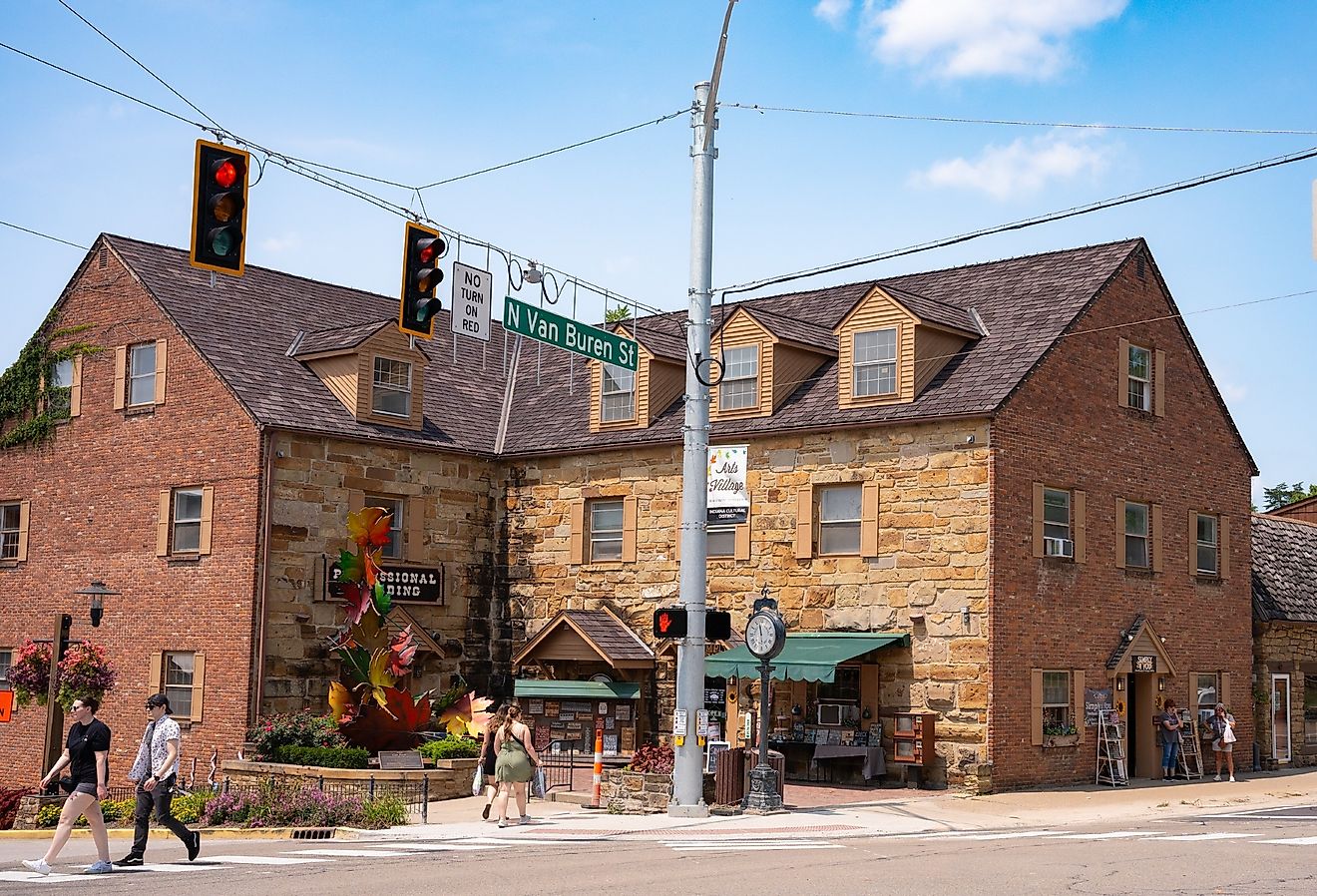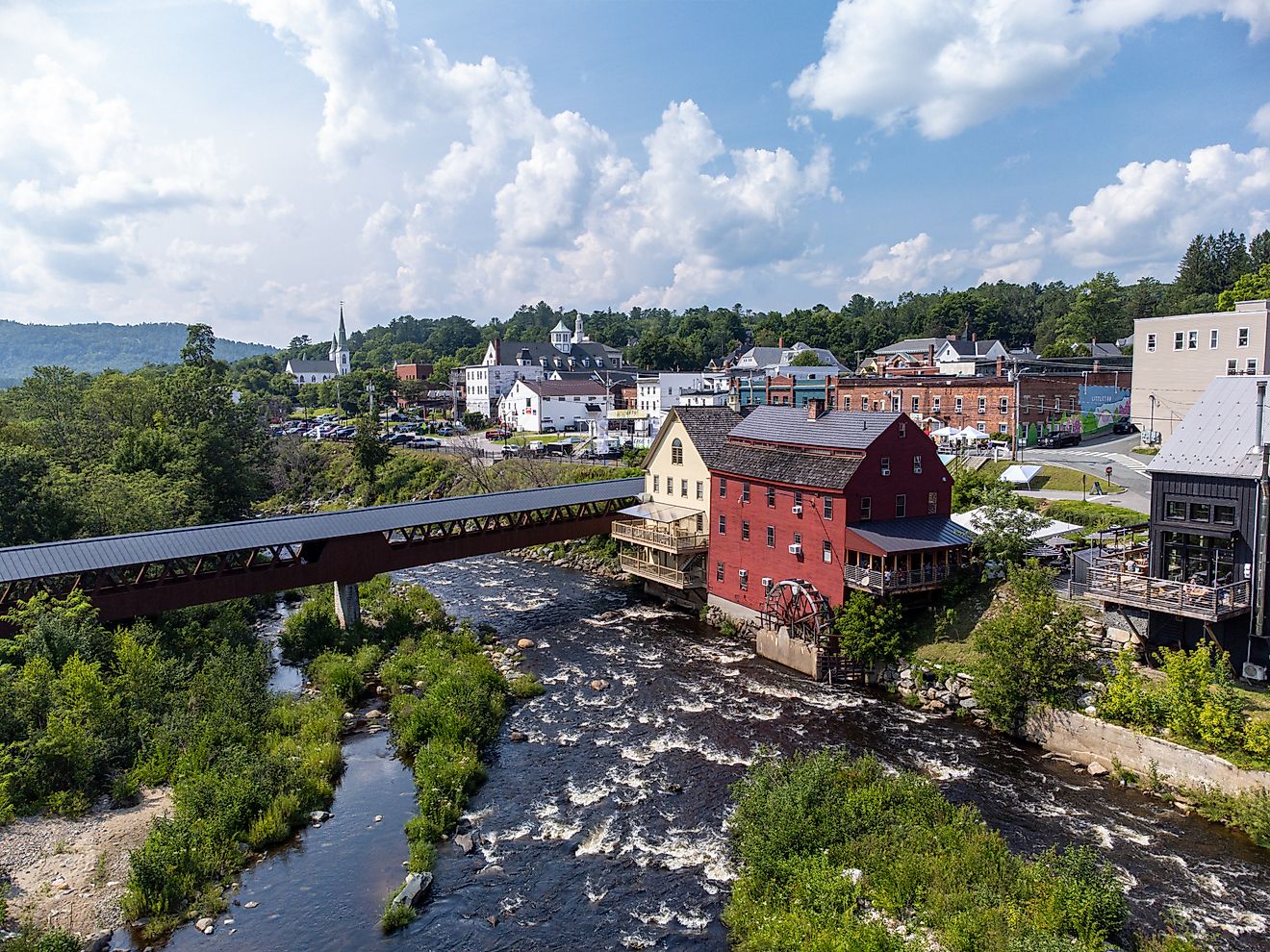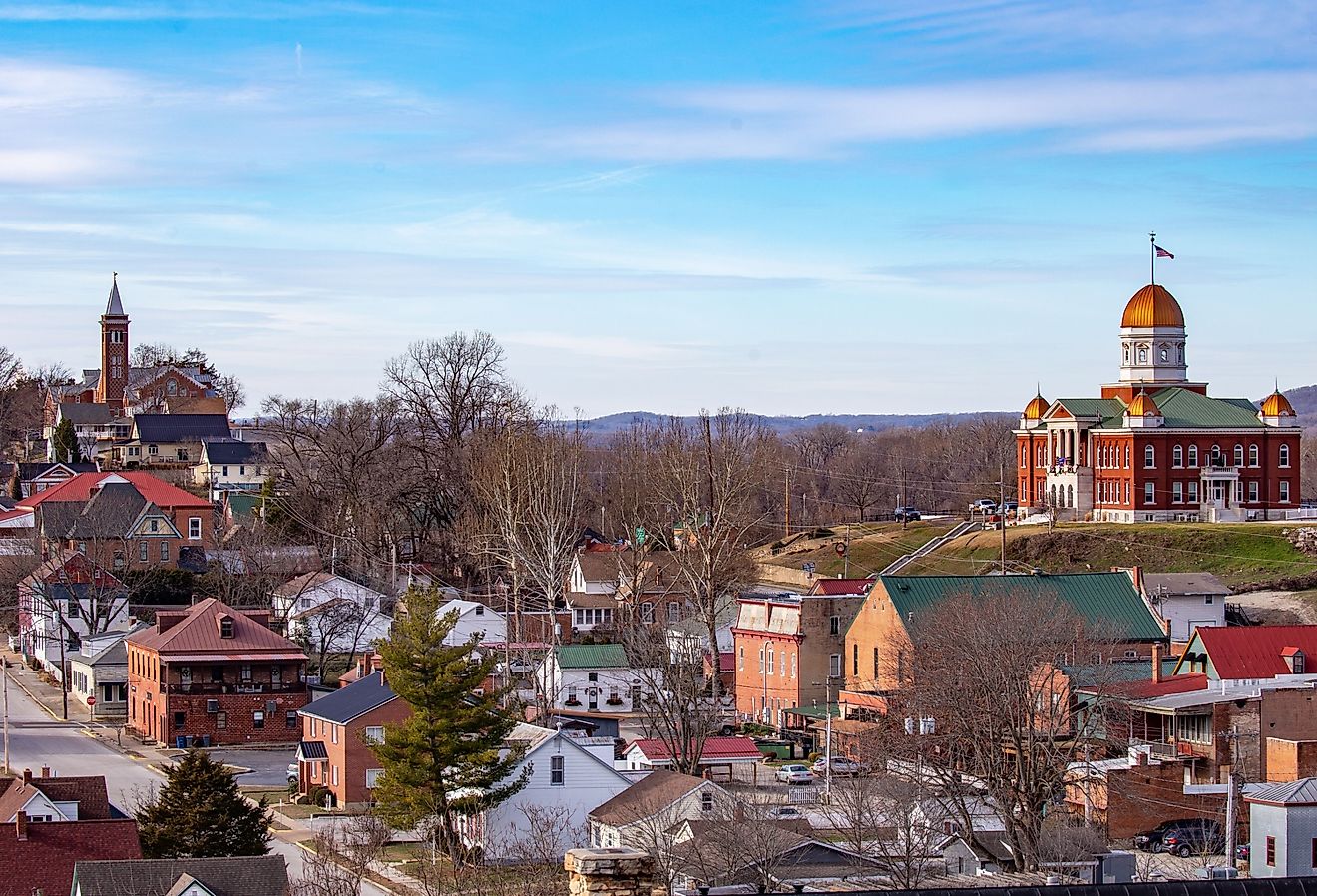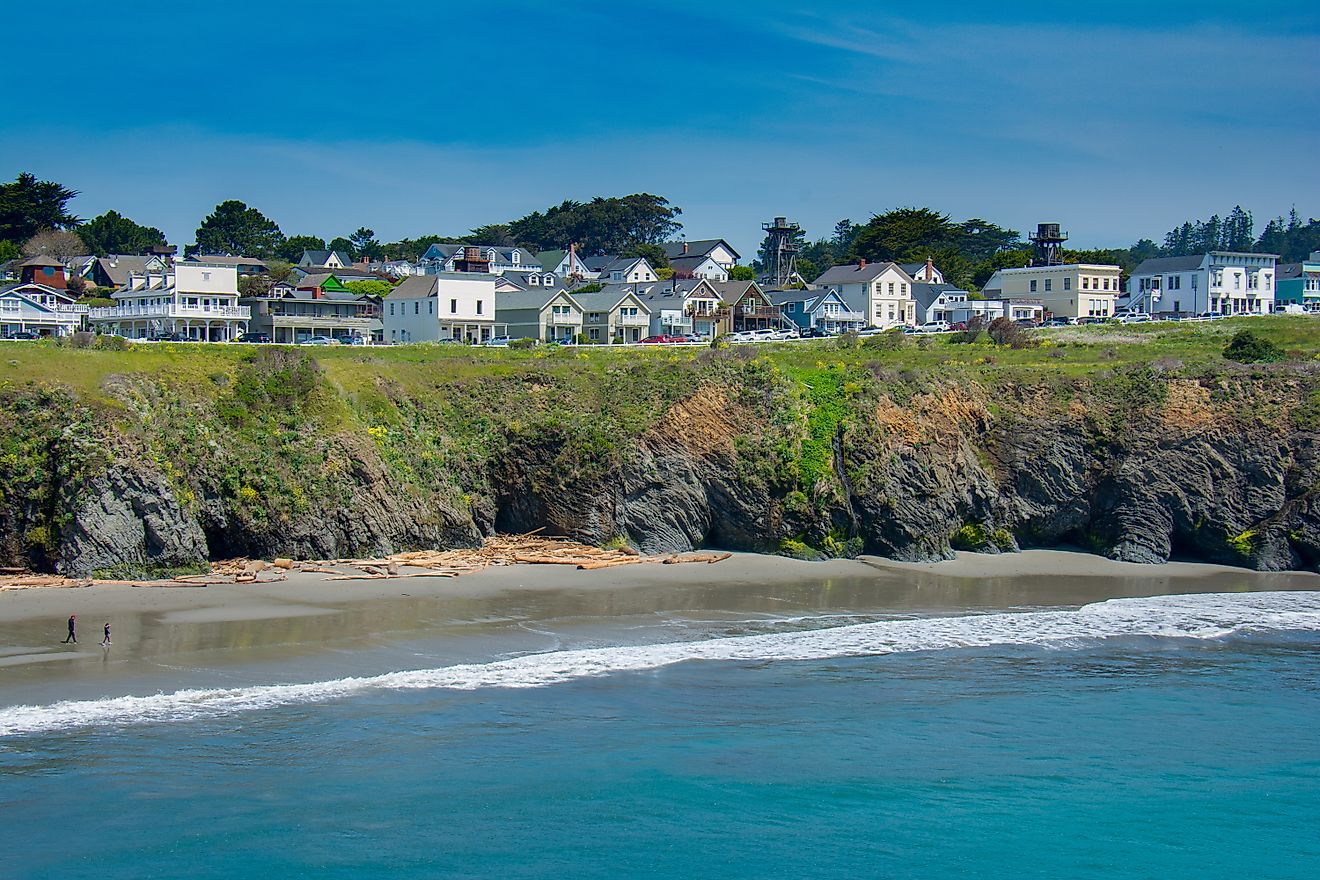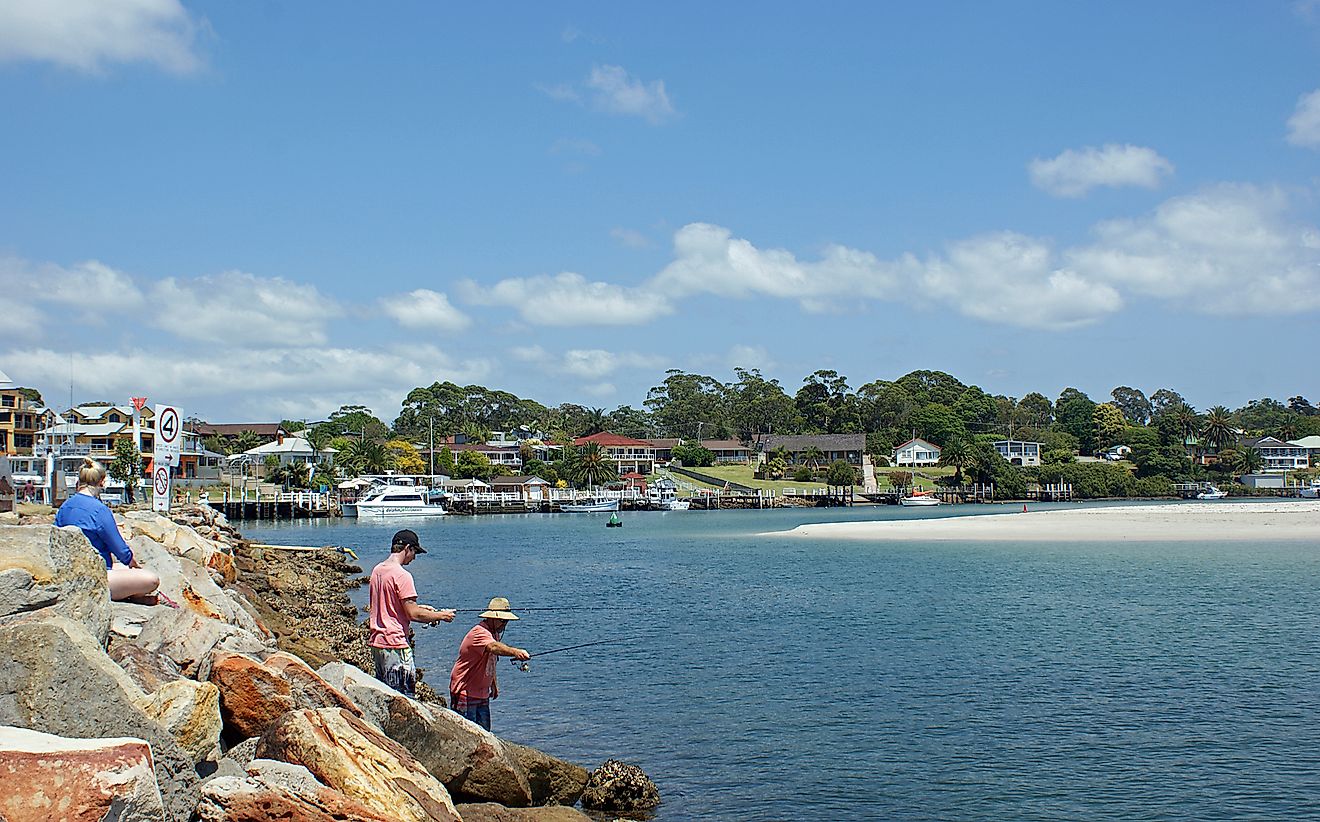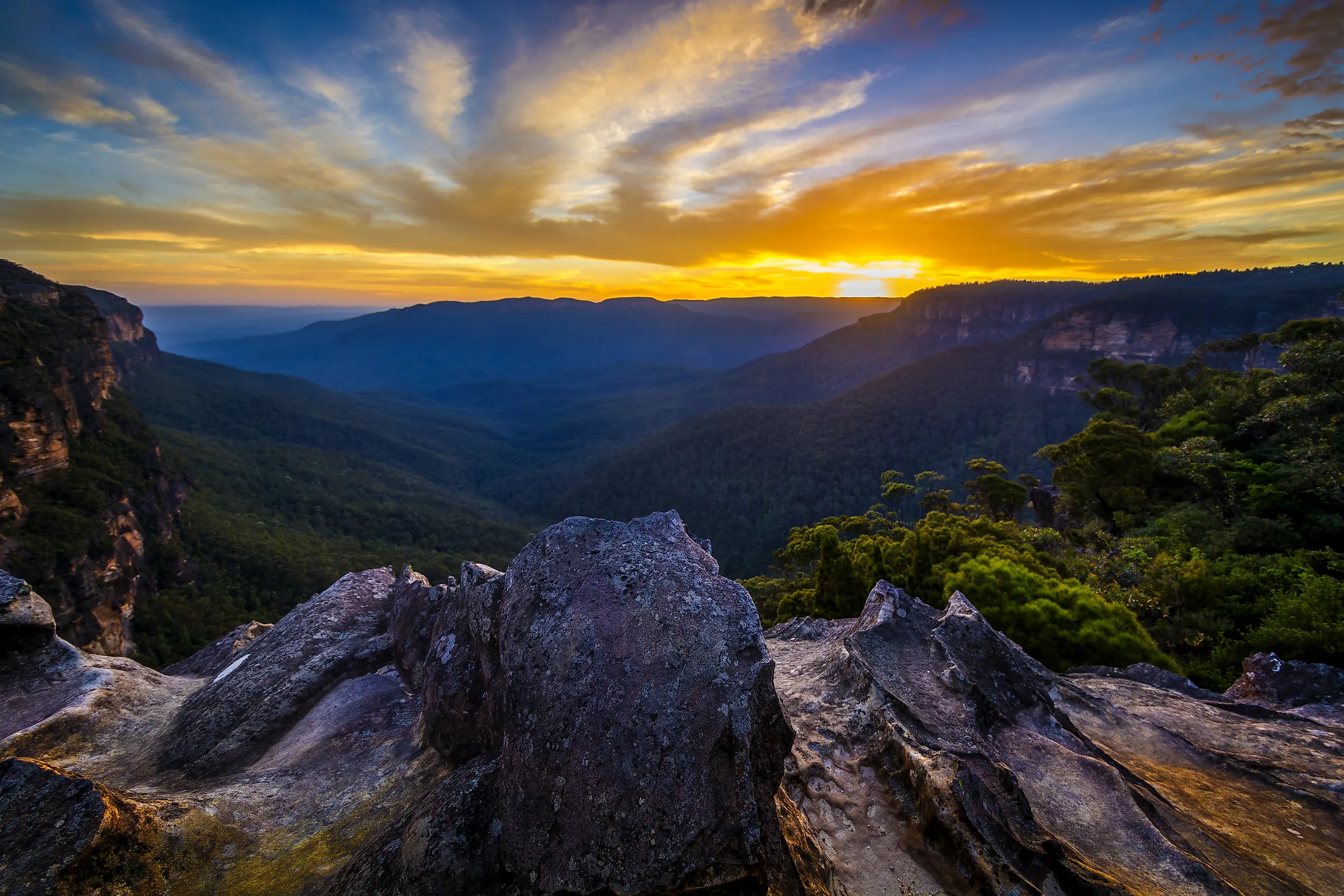
Greater Blue Mountains Area, Australia
With a land area of 801,150 km2, New South Wales is a large state situated on the southeastern coast of Australia. Situated in the Australian State of New South Wales, the Greater Blue Mountains Area is a UNESCO World Heritage Site that is made up of seven national parks and one protected reserve.
Covering an area of 10,326.49 km2, the Greater Blue Mountains Area is in the central portion of the Great Dividing Range of mountains which runs parallel to the eastern coast of the country. This World Heritage Area is located 60 to 180 km inland from Sydney, the largest and the most populous city in Australia. The Greater Blue Mountains Area is also one of Australia’s most intact and largest expanse of protected bushlands.
Geography
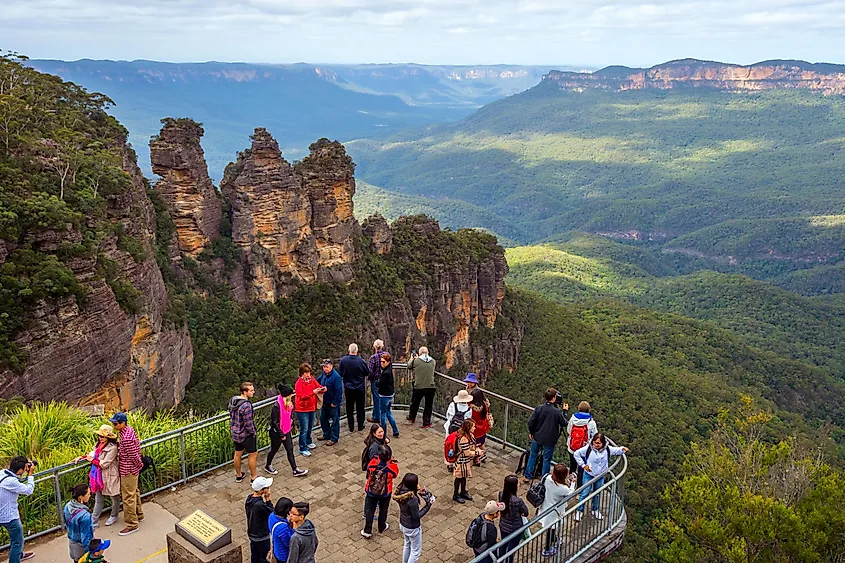
The Greater Blue Mountains Area contains large swaths of forested landscape on a deeply incised sandstone tableland. The area has a rugged terrain and features several high sandstone cliffs, slot canyons, vast plateaus, valleys, waterfalls, rivers, and lakes. The protected areas that make up the Greater Blue Mountains Area include the Blue Mountains National Park, Gardens of Stone National Park, Kanangra-Boyd National Park, Nattai National Park, Thirlmere Lakes National Park, Wollemi National Park, Yengo National Park, and the Jenolan Caves Karst Conservation Reserve.
The Greater Blue Mountains Area experiences a warm-temperate climate, but the temperature greatly varies with distance and altitude. The average summer maximum temperature ranges between 23 to 28 °C, while the average winter temperature is around 10 to 11 °C. The central areas receive an average annual rainfall ranging from 1,100 to 1,400 mm.
Wildlife
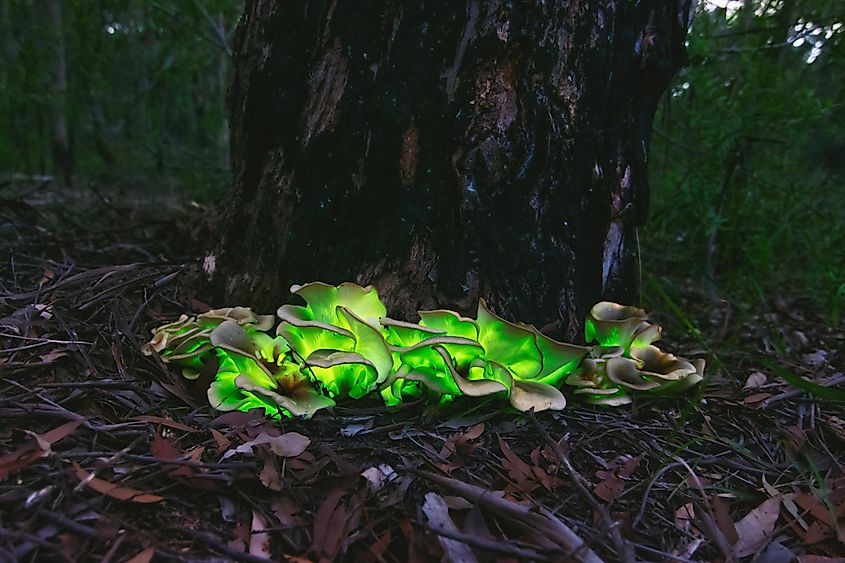
The Greater Blue Mountains Area contains an exceptional diversity of eucalypts. It is estimated that about 91 eucalypt taxa are found in the Greater Blue Mountains Area, which provides outstanding examples regarding the evolution and adaptation of Eucalyptus on the Australian Continent. The area also contains a balanced representation of a wide range of eucalyptus habitats including wet and dry sclerophyll forests, woodlands, mallee heathlands, grasslands, wetlands, and localized swamps. Besides the eucalypts, the Greater Blue Mountains Area also contains primitive plant species such as the Wollemi pine and the Blue Mountains pine, which are of immense importance in the evolution of the planet’s flora.
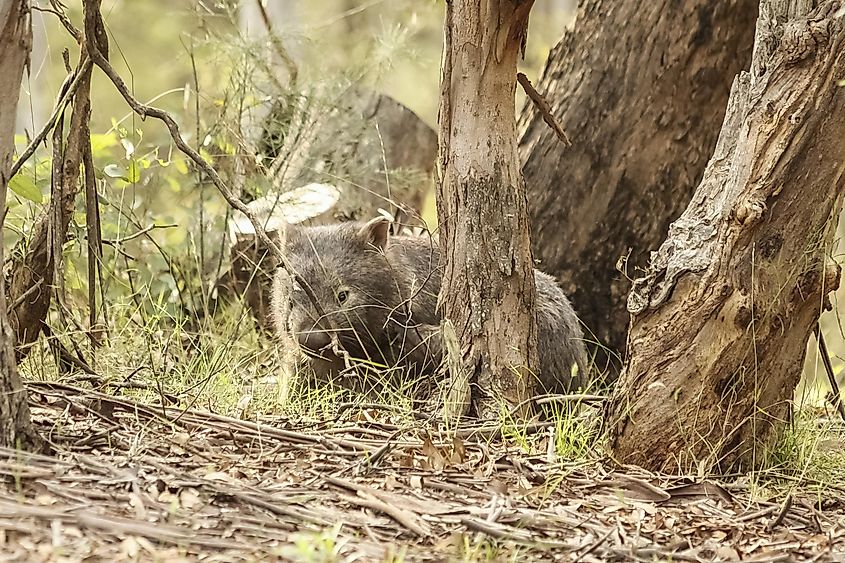
Over 400 faunal species are recorded in the mountainous terrain of the Greater Blue Mountains Area. These include the koala, red-necked wallaby, squirrel glider, platypus, tiger quoll, dingo, short-beaked echidna, yellow-bellied glider, eastern grey kangaroo, and mountain brush-tailed possum. Several rare reptiles and amphibians like the Blue Mountain water skink and green and golden bell frog are also found here. It is estimated that the area supports a rich cave invertebrate fauna along with 4,000 moths and 120 butterfly species. BirdLife International has identified the Greater Blue Mountains Area as an Important Bird Area since it hosts a high number of significant avian species like flame robins, glossy black cockatoos, white-browed babblers, white-eared honeyeaters, superb lyrebirds, and diamond firetails.
Brief History
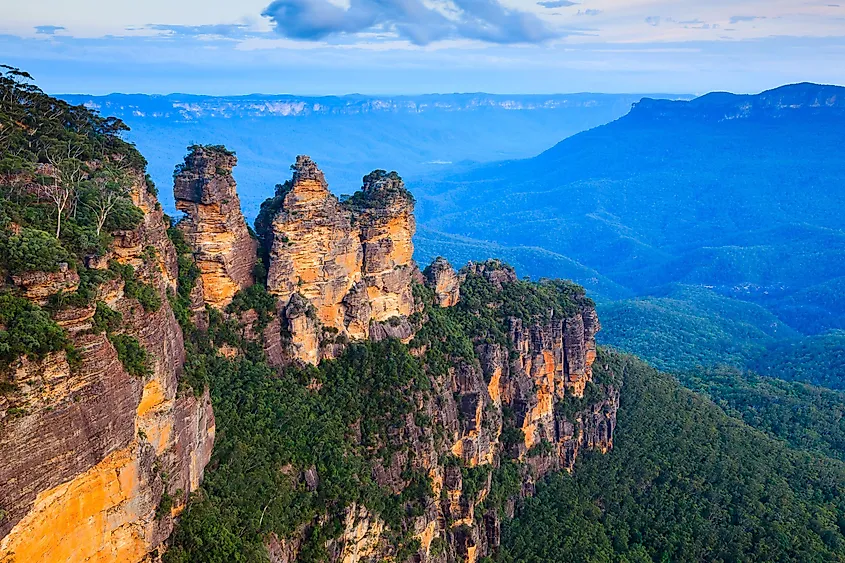
Archaeological excavations have revealed that the Blue Mountains area was inhabited by Indigenous peoples for several years before the arrival of the Europeans. Six Aboriginal groups, namely the Darug, Darkinjung, Gundungurra, Wanaruah, Wiradjuri, and Tharawal Nations are recognized as the traditional owners of the Greater Blue Mountains Area. The area was initially named "Carmarthen Hills and Landsdowne Hills," but it was later renamed the Blue Mountains after the distinctive blue color of the surrounding mountain ranges that can be seen from a far distance. On November 29, 2000, the Greater Blue Mountains Area was recognized as a UNESCO World Heritage Site.

